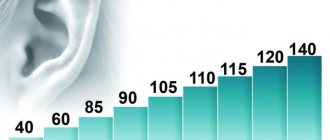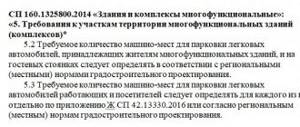The state takes care of residents of apartment buildings. That is why a one-hour period was established during which it is forbidden to make noise, carry out repair work or listen to loud music. The silence of citizens is protected not only at night, but also during the day, and a number of regional regulations in force in various regions establish when it is worth limiting noise.
But, unfortunately, not all citizens have an idea of what the permissible noise standards in an apartment are and how lawfully they behave, greatly exceeding these indicators. Let's look at these points in this article.
Acceptable standards
What are the permissible noise levels is established in Russian legislation by the relevant sanitary standards. They determine which noise will not harm the human ear even with long-term impact on a person.
The permissible noise level is officially set at 55 decibels during the day and 40 decibels at night. These parameters are normal for our hearing aid, but they are often violated. This happens especially often in large cities. All this has a direct impact on our health and peace of mind.
In reality, very often a situation arises when permissible noise levels are exceeded, and sometimes quite significantly. Here are just a few examples of sounds that we encounter in our daily lives.
The forest makes noise from 10 to 24 decibels, supply ventilation - from 30 to 40, while cooking on a gas stove, the noise reaches 40 dB, the noise level of a refrigerator - from 35 to 40, a conversation between two people in a quiet mode - from 45 to 40. 60, crying of a newborn, noise of a vacuum cleaner or office equipment, traffic on a busy street - 80, noise of a train or motorcycle in motion - 90, road repairs - 100, rousing music at a party - 110, car horn - 120, flying airplane - 140, sound explosion - 200, it is considered a lethal noise level for an ordinary person.
From this list it is clearly seen that we have to deal with a lot of these noises almost every day. Moreover, many of them significantly exceed the maximum permissible noise level. But some of them are natural noises, with which practically nothing can be done. In addition, there are many more examples where we voluntarily endanger our hearing aids by turning on music or TV too loudly. Thus, we ourselves cause harm to our body.
Why is noise pollution dangerous?
“Transport noise alone harms the health of every third person in Europe,” says the official website of the World Health Organization (WHO). Moreover, we are not always aware of this harm.
A comfortable sound level for the human ear is 20-30 decibels (dB). This is what the noise of trees sounds like. In a loud restaurant we will hear up to 60 dB, at a construction site - 80-90 dB, at a rock concert - 100-120 dB.
The 2018 WHO Guidelines on Environmental Noise state that traffic noise begins to have a negative impact on humans at levels above 53 dB. And when the noise is more than 42 dB, the normal rhythm of sleep is disrupted. The main negative consequences of noise pollution, according to WHO, are an increased risk of cardiovascular diseases, slowed cognitive abilities (especially in children), sleep disturbances, and emotional irritability. Others include muscle tension in the neck and shoulders, increased heart rate, headaches, panic and anxiety, and sleep disturbances.
Article on the topic
Deadly loud metropolis. Why is city noise harmful to health?
As for residents of Russia, according to surveys, 43% are ready to move to another area of their city or even to another city due to constant noise. The greatest discomfort is caused to them by repair and construction work, “street noise” and people’s voices.
By the way, about voices. From 2010 to 2015, a group of chief researcher at the Institute of Psychology of the Russian Academy of Sciences, Valery Nosulenko, conducted a series of studies to analyze the perception of sounds of the urban environment by Muscovites. In order to assess the type of sounds that cause the most irritating effect, residents of different areas of the city were surveyed. More than 75% of respondents noted that they regularly pay attention to other people’s conversations they hear because they disturb them. Traffic noise, construction work and other sounds that significantly exceed the intensity of the sound of people talking were mentioned less frequently. This is the specificity of how Muscovites perceive noise.
It also turned out that negative emotions are associated not with the average level of sound intensity, but with the type of source recognized or with the unexpectedness of the noise. Irritation and fear are most often caused by loud, sudden sounds: the howling of sirens, the grinding of brakes or a revving engine.
“The problem is not only in decibels, which are used to measure noise levels. There is another important characteristic: sound frequency,” explains Nosulenko. — Several years ago, in Lyon, France, we studied the noise trail left by food suppliers to shops in residential areas. The sounds of approaching car engines, the noise of carts, etc. were assessed. And it turned out that one of the most annoying sounds was the squeaking of the platform as it lowers the loads to the ground. In terms of decibels, the level of this sound is low. But he was so unpleasant that he woke up almost everyone living in the area.”
This is the challenge for city authorities in combating noise pollution. You can never be sure which sound will be the most unpleasant for city residents.
Turn it down! A million St. Petersburg residents suffer from noise in the city Read more
Harm from noise
If the maximum permissible noise level is exceeded, significant harm can be caused to the human body. For example, if the noise level reaches 90 decibels, and the impact on the body lasts for quite a long time, then such a negative effect on the body can result in diseases associated with the central nervous system.
If noise with a force of more than one hundred decibels affects our body for a long time, this can lead to a significant decrease in hearing, up to absolute deafness. So you should always remember that the harm you can get from listening to too loud music is much more dangerous than the pleasure you can expect.
With prolonged and aggressive exposure to noise on our hearing aid, even the eardrum can rupture, the so-called perforation. This leads to hearing loss, and in extreme cases to complete deafness.
Fortunately, this rupture is considered a treatable disease; she can fully recover, but you should not get your hopes up; it will be a long and painful process, the duration of which will directly depend on the severity of the perforation itself. In any situation, treatment of such a disease must necessarily be carried out under the close supervision of a doctor, who will help determine the treatment regimen and the necessary medications.
Is it possible to die due to noise?
It is believed that very loud, sharp sounds can cause death. A negative impact is observed even when the norms are slightly exceeded. Patients experience disorders of the cardiovascular system, blood circulation worsens, and spasms occur.
Fainting due to excessive noise
Noise whose intensity exceeds 135 dB is considered potentially hazardous. A long stay near a source certainly leads to serious pathologies. When exposed to noise of about 160 dB, the integrity of the eardrums is damaged.
Also, people who have been exposed to this influence tend to develop shell shock. This pathological condition is usually accompanied by loss of consciousness, sometimes falling into a coma. After the victim comes to his senses, he experiences severe headaches, constant dizziness, and nausea. Pathology often leads to severe mental disorders.
The absolute lethal sound level for humans is 200 dB. With this exposure, the lungs rupture, resulting in the patient’s death. Under natural conditions, sound of such intensity does not occur, and therefore there is virtually no potential danger to life.
In general, excessively loud noises can cause serious consequences, including death.
Spasms in the throat: causes, symptoms, treatment
How to preserve your hearing in the modern world
The most important thing that will help you avoid possible diseases and problems with hearing impairment is the desire to avoid prolonged exposure to aggressive noise on the hearing aid. In principle, this alone should be sufficient to prevent hearing loss from occurring.
Our ears definitely need to be given rest, go to quiet places far from the city for this, be in silence more often, stop listening to loud music, and don’t unnecessarily increase the volume level on the TV. Of course, all these tips are difficult to follow all the time, especially for a city resident. It is most likely impossible to escape the noise of a big city at night and during the day. To do this, you will have to close yourself off from the surrounding reality behind tightly closed soundproof windows. But you can’t stay in such an apartment for a long time, so sooner or later you have to open the windows, and along with fresh air, outside noise bursts into the apartment again.
An effective solution to this problem can be the installation of compact and modern fresh air ventilation, which will allow you to breathe purified and fresh air around the clock with the windows tightly closed. This will allow you to comply with natural noise standards and protect your body from unwanted effects.
Conclusion
The permissible noise level is determined for each room individually, but you should avoid places where the noise level
greatly exceeded. High noise levels can be unsafe for human health, aggravate problems with the nervous system and cause sleep disorders.
If you feel that the noise standards are exceeding the noise standards in your own apartment, you should contact the sanitary service; residents who do not comply with the noise standards will be subject to a fine. It is worth remembering that loud noise has a detrimental effect on the condition of the entire body, and if it is exceeded for a long time, it can cause serious damage to health.
What kind of noise is there?
There are several basic characteristics by which noise can be distinguished. It is necessary to understand the types of noise in order to understand which external influences on our hearing can pose a danger and which cannot.
Noises are temporary and spectral. Depending on the spectrum, noise can be broadband (it has a continuous spectrum of more than one octave) or tonal (in this case, the noise in one third-octave band exceeds ten decibels).
The types of noise according to their time characteristics are distinguished as follows:
- constant - changes do not exceed 5 dBA;
- unstable - changes by more than 5 dBA.
In this case, non-constant noise can be fluctuating, intermittent and impulsive.
How to change the noise level?
In order to determine whether health is at risk, appropriate measurements are taken. There are several ways to measure the noise level in a room. This is the only way you can find out the total impact on your hearing aid, which is caused by household appliances, the natural environment, neighbors and other factors.
The first way to measure noise levels is to use a professional sound level meter. There are quite a large number of such devices on the market. At the same time, devices for measuring noise can be called differently - noise meters, sound level meters, sound meters. The main thing is that they all perform the same task.
However, it is worth mentioning right away that this pleasure is not cheap. A household sound level meter will cost you about one and a half to three thousand rubles, although its accuracy will be slightly higher than that of mobile programs and applications for changing noise levels, which we will talk about later. But precise and professional devices cost up to 300 thousand rubles.
If you still use such a device, then keep in mind that the 0 dBA reading that you will see on the device at the very beginning of operation does not mean that there is complete silence in your apartment. This only means that the noise level is so high or low that it falls outside the operating range of the device, so it does not respond to it.
You can download various programs and applications to your smartphone or laptop that will help you measure noise levels. To do this, you need a microphone and a special application or program. If you are using a desktop computer, then you should connect a microphone to it, and in smartphones, tablets and laptops, as a rule, the microphone is already built-in. Sound level meters are available in most recording programs; there are also specialized applications. So you can use your own gadget as a noise measuring device.
Keep in mind that the microphone on a tablet or smartphone is most often of poor quality. This is in contrast to an external microphone connected to a desktop computer, which will give a more accurate result. However, if you don’t have the necessary equipment to measure the noise level in your apartment, your phone will do. As practice shows, the measurement accuracy, compared to professional equipment, does not exceed 5 dBA. Therefore, mobile phones with applications installed on them are actively used even by professionals involved in noise diagnostics.
How to measure in a residential area?
Unfortunately, the apartment owner is unlikely to be able to independently measure the sound in a living space. Therefore, you need to contact the appropriate authorities.
But if for some reason the noise is very loud, you need evidence to hold the person accountable (learn about liability for disturbing the peace and quiet of citizens). In this case, you can try to measure the sound using a special application on your phone. However, this will not be direct evidence in court.
How to take measurements so that there is evidence?
In order for measurements to be taken as evidence that neighbors exceed sound standards, experts advise using a special sound level meter. This is equipment that operates using special technology and produces an average indicator, which will then be compared with acceptable standards.
Who should I call to carry out the procedure, besides specialists from Rospotrebnadzor?
Since self-measurement will not be evidence, you need to contact a specialist from Rospotrebnadzor. These persons have the authority to carry out such a procedure. Naturally, it is not free.
Conducting research at your own expense is at a fairly high price level. For example, three daily measurements will cost you 10,000 rubles. At night, this amount rises to 13,000 rubles.
Considering that you will have to take additional services in the form of drawing up an examination report, the amount increases to 30,000 rubles. Also, the expert must keep a protocol of measurements , where he will indicate the dynamic and frequency noise level.
In addition to representatives of Rospotrebnadzor, you can call employees of other special organizations that work independently. However, check in advance whether they have the required level of accreditation and whether they are members of an SRO.
Upon completion of the procedure, you will be issued a document that must have legal force. It can be issued by independent accredited companies or the expert service of Rospotrebnadzor.
An examination can be ordered by the court if there is a claim, or the owner of the apartment carries it out independently in order to obtain evidence for the court in advance.
As for the prices of Rospotrebnadzor, they will charge approximately 540 rubles for one point. However, there should be from 10 to 15 such points in the apartment, which means the amount increases naturally.
How is noise measured?
Don't be surprised that you may come across different units of noise measurement in different sources. This can be a “regular” decibel, which is denoted as dB, in our case a unit of sound pressure.
An alternative version of dBA is decibel, which takes into account the so-called frequency filter A. The fact is that our hearing aid reacts unstably to the pressure of sounds at different frequencies. Manufacturers strive to ensure that the sound level meter demonstrates the objective noise level perceived by humans. For this purpose, frequency filter A is used.
Please note that even in the simplest specialized sound level meters, the parameters of the signal processor and microphone are necessarily consistent. This cannot be achieved on a phone. So the accuracy of such a measurement will be low.
Comparative assessment
Another way to calculate the noise level is a comparative assessment, because the indicators of most household appliances and even natural factors are approximately known. This, of course, is the most inaccurate, but at the same time the simplest method, which does not require additional costs or even the installation of special software.
With this comparative assessment, you can get a rough idea of how noisy your apartment is and whether the noise level calculation meets the recommended standards.
To make this assessment, first try to reduce the noise level as much as possible. To do this, close all doors and windows tightly. It is important to get rid of extraneous sounds from the street and landing, turn off all “noisy” household appliances.
After that, take the simplest metal needle and drop it on the shelf. The volume of the sound you will hear is approximately 15 dBA. After this, go to your refrigerator, the noise level of this household appliance ranges from 35 to 40 dBA.
Now, by conducting a simple comparative analysis, you can determine how noisy it is in your room. For example, the volume of a quiet conversation is between 60 and 70 dBA. If you have to raise your voice to communicate, it means that your apartment is too noisy, the background level is approximately twice as loud.
Let us remind you that in the daytime the permissible noise limit in an apartment is considered to be 40 dBA, and in the surrounding area - 70 dBA. At night these parameters are 30 and 60 dBA, respectively. In such an environment you will be comfortable living, working and relaxing; you will not experience any discomfort or negative impact on your health.
How to protect yourself at noisy work?
Hearing loss due to regular exposure to noise is irreversible. Therefore, it is very important to prevent harm to health and undergo regular medical examinations. You can determine the noise level using a special device. There is also a less accurate, but simpler way: if you cannot hear a person who is not screaming and is two meters away from you, then the noise level is threatening.
If you are affected by more than 75 dB, then you need to wear anti-noise headphones or earplugs (they remove up to 25 dB) or at least sometimes get away from the noise. Often, even a 10-minute break will help recovery. However, after 2 hours spent at 100 dB, a 16-hour rest is needed. If a loud noise causes pain, move away from the source immediately.
When assessing the harm to the body from noise, keep in mind that when its level increases by 3 dB, the safe exposure time is halved.
Sometimes employers don't want to do anything about noise pollution. In this case, you can contact the personnel department, the trade union, if there is one, or the labor inspectorate. Labor legislation requirements are designed to protect human life and health. Medical examinations of people working in noisy areas should be carried out regularly. This will preserve your health and hearing.
Noise at work
The average adult spends a significant portion of their life at work—up to 40 hours a week. Therefore, it is very important that the noise level there also complies with generally accepted standards and criteria. Their level is determined by sanitary standards.
High noise levels in the workplace can have negative consequences. All this leads to a significant deterioration in health: diseases of the auditory organs and nervous system appear, and the possible occurrence of such serious diseases as neurosis, sensorineural hearing loss, insomnia, depression, all this leads to a decrease in overall working capacity. In addition, under the influence of negative sound effects, gastritis and ulcers develop, and blood pressure increases.
To summarize, the negative impact of noise leads to damage to the inner ear, deterioration of sleep and memory, narrowing of blood vessels, and a decrease in the bioelectrical activity of the human brain.
The effect of loud sounds on human health
In no case should you underestimate the danger from loud sounds to the human body, because it is not for nothing that the maximum permissible noise level in an apartment is established by law. The fact is that you can feel the negative consequences only after a certain time. If a person’s hearing is constantly subjected to auditory attacks, then over time the physical condition of the person living in such conditions deteriorates. What actually threatens health:
- A person may notice that his labor productivity decreases several times, and constant fatigue appears.
- The ability to express one's thoughts and the ability to communicate is lost.
- The ability to receive optical signals is reduced.
- Excessive noise also negatively affects the ability to learn and assimilate new information.
- In a family that lives in an apartment where there is constant noise from neighbors, emotional tension is often noted.
- Loud sounds contribute to rapid aging and increase the risk of heart diseases.
- The nervous system and immunity suffer from excessive noise.
Reference! Children who live in areas where there is noise pollution most often experience problems with concentration and lack of logical thinking. In their development, inhibition of speech activity can be noted from early childhood.
Why noise in the workplace is harmful?
If the noise factor is systematic and pronounced, then deterioration in health is inevitable. First of all, severe consequences are noted for the nervous system. Fatigue increases significantly, the mental state is depressed and a persistent feeling of restlessness and anxiety appears.
Negative consequences include the occurrence of:
- neuroses of various types;
- persistent depressive states;
- sensorineural hearing loss.
Working in a noisy workplace sooner or later leads to hypertension. Experts also note the likelihood of developing peptic ulcers, which, in turn, is a consequence of being under constant stress.
In the most pessimistic scenario, noise exposure provokes a decrease in the bioelectrical functioning of the brain. Because of this, blood vessels narrow, and over time, memory deteriorates sharply.
As a result of distracted attention and chronic fatigue syndrome, workers show decreased performance.
Negative effects of noise on human hearing
If loud sounds affect a person's hearing for a long time, this will lead to damage to the hearing aid, to the point that the eardrums inside the ear may rupture. The result is complete deafness. You need to know that different noise levels emit.
At forty decibels, sleep is disturbed, and at seventy decibels, the nervous system is disrupted, and mental illnesses begin to develop. A deadly level is considered to be two hundred decibels; at such a volume, death can occur.
Noise as a harmful production factor
Unfortunately, women and older people are more likely to be affected by noise at work. Increased sound pressure can have a negative impact on your hearing. Therefore, it is worth noting that noise measurements must be taken in production using a two-scale sound level meter. Noise levels up to 100 dB are allowed in workshops. As for forge shops, the noise level there can reach 140 dB. Loudness that exceeds this threshold in workers will cause a painful effect. It is also worth noting that scientists have substantiated the theory of the harmful effects of infrasound and ultrasound on the human body. To protect your workers, it is worth carrying out production control at enterprises.
These vibrations cannot cause pain, but will produce a specific physiological effect on the human body. The level of industrial noise should not be higher than 140 dB; after exceeding this threshold, pain will already occur, and the noise will cause irreparable harm to human health. If there is an increased level of noise at work, then the employee will always have increased blood pressure, increased heart rate and breathing, impaired coordination of movement, as well as hearing impairment.
Protection against industrial noise can be in the form of special aerodynamic noise mufflers, it is also possible to use personal protective equipment, and you can also apply the technical subtleties of sound insulation and sound absorption.
Acceptable noise at work
Currently, scientists have developed a number of different techniques that are designed to normalize noise in the workplace. For example, in 2015, a new GOST came into force in the Russian Federation, which established new parameters. It uses the concept of maximum permissible level or MPL as the main criterion. That is, with this indicator it is permissible to work the standard 40 hours a week for a long time without serious consequences for the body. Of course, these are average indicators, there is individual sensitivity to noise, but then it is better for the employee to consider changing jobs.
Specific standards in the workplace are given in sanitary standards. For an occupational safety specialist, the most relevant at the moment are the standards for “Noise in workplaces, residential premises, public buildings and residential areas. They must be unquestioningly implemented by all organizations, firms and enterprises without exception. Violation of them is subject to disciplinary and administrative liability up to and including a complete shutdown of the enterprise.
In addition to the classification itself, the list of definitions that are necessary to prevent a harmful factor and measure the level, these sanitary standards provide a list of specific parameters and maximum permissible levels for various types of work.
These standards can be divided according to several types of production activities, that is, according to certain professional criteria. The fact is that it is not so important what the employee directly does; what matters much more is how intense and hard his work is.
To summarize, the main requirements of sanitary standards can be summarized in the following list:
- for low-stress work of moderate and light severity, the maximum permissible level is 80 dB;
- for low-stress heavy and very heavy work - 75 dB;
- for moderately intense work of light and medium severity - 70 dB;
- for moderately intense heavy and very heavy work - 65 dB;
- for strenuous work; 50 dB for very intense work - 60 dB.
Permissible noise standards in the apartment
Why is expertise needed?
Exceeding the permissible noise standard for residential buildings in the Russian Federation is one of the main factors of environmental pollution. This means that this indicator must be regularly monitored in order to avoid deterioration in health.
The Sanitary and Epidemiological Station has developed a number of regulatory documents that determine the degree of danger of noise, both in residential premises and on the street, in industries, medical and educational institutions.
In the daytime and at night these are different indicators; by the way, during the day they are higher.
Noise standard in decibels in an apartment at night
Night time, according to current laws, is the time from 11 pm to 7 am. During this period, any sounds exceeding a level of 30 decibels are prohibited. This value can be compared to a quiet conversation.
At night you cannot:
- Use a TV, stereo system, etc. equipment without headphones;
- Repair, rearrange, assemble furniture, etc.;
- Use pyrotechnics;
- Make any loud sounds: whistling, screaming, etc.
Not all loud noises at night are illegal.
There are exceptional situations where noise is a part:
- Festive events involving the entire city, during which loud music is played and fireworks are released at night;
- Operations to apprehend criminals;
- Force majeure (fire, flood, earthquake, etc.).
Some apartments are home to families with small children, elderly and sick people, as well as citizens who work at night. They need silence even during the daytime, and neighbors who do not respond to their requests to comply with it are breaking the law.
- Sources of background noise
- Sounds propagating in a high-rise building can get on your nerves and interfere with normal rest, proper sleep and the performance of a number of works.
- Noise in an apartment building occurs as a result of:
- Loud operation of video and audio equipment;
- Work of household appliances and power tools;
- Playing some musical instruments, in particular piano, drums, trumpet;
- Screams, scandals and swearing;
- Hosting parties and special events;
- Work of elevator and pumping equipment;
- Operation of the hood and air conditioner.
Office rooms
It is worth mentioning the noise level in office premises. As already noted, the harmfulness of noise primarily depends on the degree of intensity of the employee’s work. Therefore, individual parameters have been established for office staff.
For workers engaged in scientific or creative activities, as well as managers, the noise level should not exceed 50 dB. Administrators, analysts and measurement staff can work at a noise level of 60 dB, dispatchers and operators who need to constantly concentrate at a level no higher than 65 dB.
Noise level in residential buildings and public buildings for various categories
The noise level in a public place is different from that in a residential building. The norms are put into separate categories in social standards.
- In hospitals, clinics, patient rooms and sanatoriums, the sound level cannot exceed 69 dc, and the noise can last from 6:30 to 23:00. At night, the noise level should be at 40-50 dts.
- In another category are educational institutions: schools, kindergartens, classrooms, school libraries. In such rooms it can be at the level of 60 Dc., for a short time and only from 7:30 to 18:00, at night the norm is exceeded
- unacceptable. If schools are planning mass events later than 18:00, it is worth warning the sanitary service about the possible excess of noise levels.
- In hotels and inns, sanatoriums, as well as in dormitories, the noise level should not exceed 49 dc.
The noise level in residential buildings and territories is set individually by services, depending on the sound insulation, ventilation system and proximity to residential premises.
But there are noise standards that should not exceed 40 dts. at night from 23:00 to 6:30 am. This applies to both apartments and nearby shops, shopping and entertainment centers, for which the same noise level standards exist.
The noise level in rooms or houses that are close to the road or highways may be higher, but be in the range of 50 to 60 dc.
Sound waves need to be measured under certain weather conditions. In our article you can learn about the classification of the main parameters and sizes according to the purpose of the fence.
Here you will learn what airfield plates are and where they are used.










